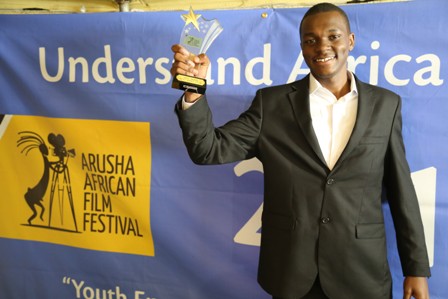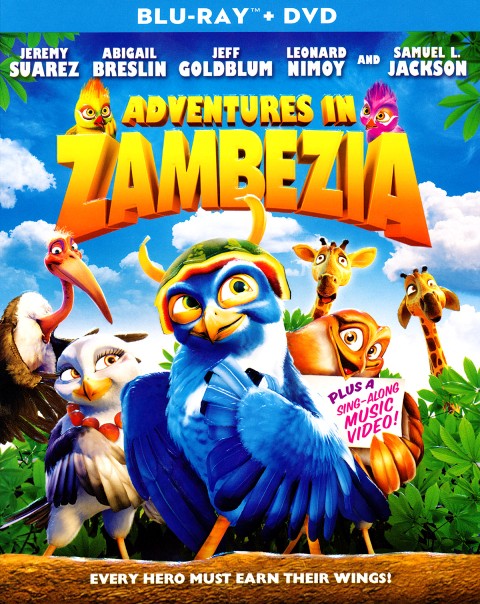By Fred Mbogo
Published October 1, 2008
A peek into the screen magic served by Kenyan film and television producers reveals a more than casual interaction between live and recorded performance. Actors are aware of watching audiences and play to them like they would on a live theatre stage. Directors have to make do with scenes where language is heightened rather than stunt-men employed. Writers turn to words where picture and sound would suffice. Yet where live theatre elements may be deemed to have interfered with the quality of local products by an audience increasingly fed on Hollywood pictures, they are instead celebrated. How is it then, FRED MBOGO poses, that such local drama products as Vioja Mahakamani, Vitimbi, Tahidi High and Papa Shirandula are flourishing despite their “stagy” nature?
Moses Oduwa’s latest works may serve to explore the benefits of “stagyness” in recorded performance. He has to his name Angang’ Masaa and Story Time which are two screen-based recordings produced in the latter part of 2007 and early 2008. Currently he performs on Citizen TV’s Angel’s Café as a storyteller in one of its segments named Story Time. His experiences as a performing artist go a long way back to the late 1980’s and early 1990’s when as a student at Kisumu Boys’ High School he participated in numerous performances in the Kenya Schools and Colleges Drama Festivals. This experience, coupled with a dose of writing, directing and further performances at Eregi Teacher’s College, prepared him aptly for the practice of community theatre in Kisumu in the mid 1990s. In August 2007, Oduwa was part of a group of Kenyan film and television practitioners that took an eye-opening trip to Lagos, Nigeria. The idea was for the group to familiarise itself with the practices of the bustling Nollywood home videos sector
Given that Oduwa’s Nigerian trip came only four months before the end of 2007, it becomes remarkable that by January 2008 he had already come up with two films whose DVD versions were selling well by April 2008, according to the producer.
RELATED: Arts festival bridges urban dream in Kenya
Angang’ Masaa is structured on an easy story line that traces the travails of a woman who feels let down by an ever drunk husband. The woman surveys her options and variously attaches herself to men of means who in turn take advantage of her, if only as men seeking prostitutes would. She seems to be in a hurry to get the good things in life and their accompanying comforts from the men but they are adept at moving on as soon as they have acquired their quest from her.
The shame, embarrassment, confusion and feeling of betrayal felt in the woman does not last when she is abandoned, instead a volcanic thrust of emotions related to resilience take a hold of her and she soon sets out to get the next man of means. This cycle of activities propels the story towards its eventual romantic end.
Of greater interest is the use of language in Angang’ Masaa. Dholuo, which is the predominant tongue with snatches of Kiswahili and English, seems to serve an immediate urge in the audience towards consuming the story. It seems to excite viewers into imagining the locale of the events as close as next door! It works with the familiarity of the market scenes, matatu routes, mode of dress, and virtually what might be deemed minute triggers to the mind to think of the now and here. For this reason, the story becomes owned by the viewers and plays out as part of other larger conversations based on gossip or hushed true stories questioning the morality of its people. And just like cultural theorists like to say, the images telling the story become a route through which the myths of a people are circulated, examined and re-examined.
RELATED: Uganda National Theatre stages Joseph Kony brutality on Children
Yet technically, Angang’ Masaa’s quality may be deemed wanting on many fronts. The single camera relaying the images is limited in terms of angle of shots. It also is mainly hand-held, which occasionally leads to literally shaky results. The sound is unequal in the sense that often when characters are at moments of crisis their voices are suppressed and where messages are meant to be communicated in a subtle manner, they end up being “screamed.” There is also the interference by the noise from outside the film set where the film’s intent would be to focus on a specific scene with its silences.
Where pictures should only include the actors, the camera strays into audiences watching the action being recorded. Where actors should “live” the lives of their characters, they sometimes step out of their roles and look into the camera as though hoping to interact directly with the audience, an aspect of live theatre where actors often look past the fourth wall into the audience. The other aspects of “liveness” is the actors’ resort to speaking as though their intent is to project their voices to an audience in a live theatre space such as a hall. Thus, the viewers are often treated to “shouts” where more relaxed renditions would be enough for the story’s revelation.
A cursory visit to DVD selling points at Nairobi’s River-Road or downtown Eldoret, for instance, projects an ironic turn of events. It seems that audiences love more the products that bear marks of technical frailty than those that may be considered technically superior. In many instances one encounters tens of curious people standing in-front of such DVD selling points in attempts at whetting their thirst for local stories. The fact that these stories are often consumed by groups watching them on screens placed in public places as marketing strategies as well as in halls where minimal charges allow for hordes of people to gain access, make it possible for the viewers to seek the immediacy of the stories while readily discussing them in the groups rather than be left struggling to piece the story together. Thus, while Angang’ Masaa may seem technically inept, it still remains popular since it invites its audience to share almost directly in the pains and joys of the main characters without resorting to any philosophical musing or deep thinking. After all, the linguistic and technical sophistry provided through Hollywood movies often times escapes the viewers and denies them a chance to appreciate the forthcoming aesthetics in as authentic or “fresh” a manner as Angang’ Masaa does.
RELATED: New dance language on Kenyan stage
Oduwa’s other production, Story Time, is a greater testament to the relationship between live and recorded performance. It is a compilation of stories narrated to various groups of children. Essentially, it can be said to be a recording of live theatre performances. The narratives are easy to follow since they are short and the camera’s eye delivers both the narrator’s facial expressions and gestures plus the reactions from the “live” audience (the children).
This is a more direct way of involving live theatre tactics in delivering stories to a wide audience. Considering that the art of storytelling as perfected by “traditional” tellers such as grandmothers is slowly fading away, the idea of presenting these recorded performances becomes important. The problem is that the delicacies of “liveness” where direct interaction sometimes involves singing, cracking riddles and making jokes, is diminished. The recorded art then merely becomes a front for reminding us of the beauty of being audiences in live performances.
In an industry fraught with financial difficulties and uncertainty, live theatre performers have had to transform themselves into film and television actors. This then is reflected in their renditions within such recorded dramatic performances as found in film and television drama. Yet because audiences are interested in consuming stories with immediate relevance the performances are applauded through sales.
RELATED: Ethnic accents spice up comedy in Kenya
Where perfectionists in film and television production could be quick to dismiss the efforts of emerging artists such as Moses Oduwa, they ought to understand that this industry suffers from inadequate funding. If only this funding can come from these initial technically “challenged” productions, then it means we could soon witness a resulting upward spiral of quality film and television productions.
Already, productions such as Papa Shirandula, though still bearing elements of live theatre, have made strides in coming up with unique ways of making such elements acceptable. This only means that East African film and television productions can only become better. The live theatre elements can be stylised to produce an East African style! Yet this success is only possible if policies targeted at taming piracy are established. Or is the high rate of piracy a sign of the huge appetites created by the films of artists of the Moses Oduwa ilk? Is this urge to piracy not a pointer to artistic success? And so what if the art is deemed technically challenged?



